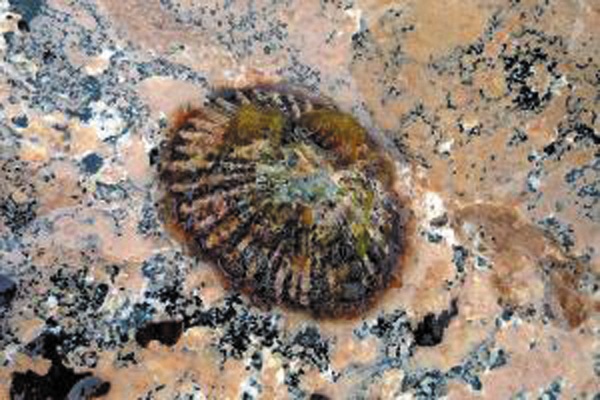HONOLULU — Once an isolated place where arriving marine fauna evolved into unique, endemic species, Hawaii is now exporting biodiversity, according to University of Hawaii researchers. For more than 30 years, biologists have assumed that Hawaii was an evolutionary graveyard
HONOLULU — Once an isolated place where arriving marine fauna evolved into unique, endemic species, Hawaii is now exporting biodiversity, according to University of Hawaii researchers.
For more than 30 years, biologists have assumed that Hawaii was an evolutionary graveyard for marine fauna.
Hawaii has always been an isolated oceanic archipelago, and marine species arrived from elsewhere, including biodiversity hotspots such as the Coral Triangle in the western Pacific.
Fish larvae from the western and southern Pacific Ocean might travel up to 50 days and then take hold in Hawaii, arriving in much the same fashion as the Polynesian voyagers did. If these marine colonists were unable to maintain genetic connections with ancestral populations, they would eventually develop into unique Hawaiian species. And that was thought to be the end of the line.
Now new research is showing that Hawaiian marine animals are radiating back across the ocean, spreading their genes and adapting to new environments as part of a complementary process of biodiversity feedback.
“What we’ve shown with genetics — by finding out who’s related to who across the Pacific — is that Hawaii can export biodiversity, and that it does contribute to the overall biodiversity of the Indo-Pacific,” said Professor Brian Bowen of the UH at Manoa’s Hawaii Institute of Marine Biology.
Bowen and his colleagues at HIMB and the California Academy of Sciences have identified a growing body of evidence that oceanic archipelagos are actively exporting genetic and biological diversity.
“The Coral Triangle in the western Pacific has the highest marine biodiversity in the world in part because it has a halo of islands around it, like Hawaii, the Marshall Islands, and French Polynesia,” Bowen said. “These peripheral islands can both import and export biodiversity.”
The yellow tang (lauipala) is Bowen’s favorite example of a Hawaiian species on the move. This charismatic bright yellow reef fish is spotted by snorkelers on all of the major Hawaiian islands, plucking at algae and seaweeds with its short snout-like mouth. HIMB researcher Jeff Eble (now at University of West Florida) found that yellow tang ecology, historical demography and genetics point to a Hawaiian origin several hundred thousand years ago. Now they occur as far away as Japan.
Other Hawaiian creatures venturing out to ply new waters include the ember parrotfish (uhu), the Hawaiian pink snapper (opakapaka), and the lollyfish sea cucumber (loli).
“When species forged in the flames of competition arrive in an area of ecological release like Hawaii, they have the space to try new things,” Bowen said. “It’s called niche expansion. These new capabilities allow the species to in turn expand out and contribute to high biodiversity elsewhere in the Pacific.”
Lead author Bowen and his colleagues recently published their findings on biodiversity feedback in the scientific journal Trends in Ecology & Evolution. The paper also highlights how physical isolation is not the sole avenue for marine speciation — many species diverge along ecological boundaries.
One example is the Hawaiian limpets, a type of sea snail known locally as opihi. HIMB researchers Robert Toonen and Chris Bird (now at Texas A&M University-Corpus Christi) have shown that the opihi arrived from Japan, and then radiated into three separate species along an ecological gradient in the tidal zone between low water and high water.
The discovery of these evolutionary pathways has applications to the conservation of coral reef ecosystems. In 2006, the entire 2,000 kilometers of the northwestern Hawaiian Islands was protected as the Papahanaumokuakea Marine National Monument. This sanctuary was designed to protect the unique biodiversity of Hawaii, but the new research shows that Papahanaumokuakea incubates new biodiversity as well. HIMB research indicates that this region may also contain the evolutionary gateway by which biodiversity is imported and exported from Hawaii.
UH Manoa is taking a lead role in genomics research to explore the origins of marine biodiversity. At HIMB’s evolutionary genetics core facility on Coconut Island in Kaneohe Bay, researchers have access to top-of-the-line DNA sequencing and quantitative bioanalysis equipment.
“Genomics will reveal which genes are responsible for evolutionary divergences that are the foundation for biodiversity,” Bowen said.




